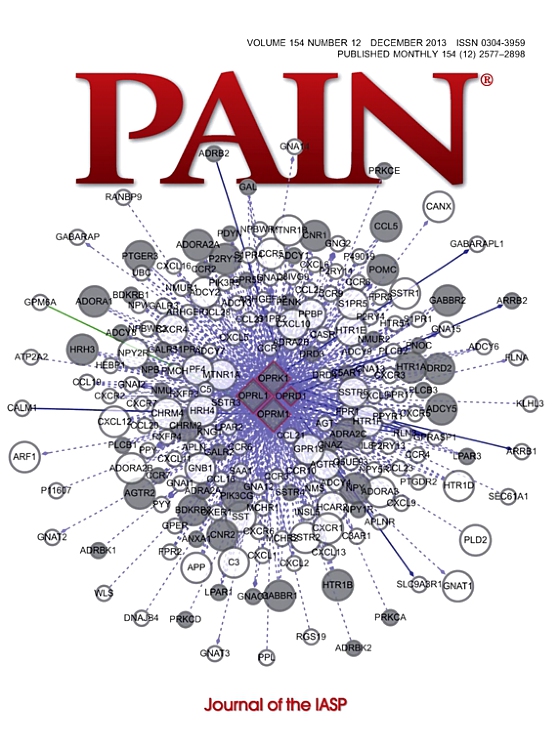The association between pain-related cognitive biases and their impact upon task interference by anticipating pain: a virtual reality approach.
IF 5.9
1区 医学
Q1 ANESTHESIOLOGY
引用次数: 0
Abstract
Contemporary pain theories postulate that pain-related attention bias (AB) and interpretation bias (IB) uniquely and synergistically impact upon poor pain outcomes. As yet, available research findings are scarce and mixed. The current study aimed to investigate the association between pain-related AB and IB and their impact upon task interference by impending pain. A total of 85 healthy participants performed a newly developed virtual reality (VR) paradigm allowing to simultaneously assess AB, IB, and pain-related task interference (ie, because of the presence of pain-related information) within a dynamic pain context. Particularly, participants learned to distinguish pain (CS+) from nonpain (CS-) cues, as represented by balls of varying blue shades. In a following test phase, participants completed a 2-back task while 1 of the 3 cue types (balls) was floating around in the VR environment: pain cues (CS+; light blue shades), ambiguous pain cues (CSA; mid blue shades), or nonpain cues (CS-; dark blue shades). During the entire paradigm, cue-related eye gaze (AB), pupillometry data and pain threat ratings (IB), as well as 2-back task performance (task interference) were recorded. Results indicated the presence of AB and IB for (ambiguous) pain cues. Furthermore, task interference (longer response latency) by pain-related information was observed in the presence of pain cues. In addition, results revealed a positive association between IB and AB toward identical ambiguous pain cues. Furthermore, AB and IB were found to uniquely, but not synergistically, impact upon task interference. Future validation studies replicating current findings while manipulating context features and goal pursuit are warranted.疼痛相关的认知偏差与预期疼痛对任务干扰的影响之间的联系:一种虚拟现实方法。
当代疼痛理论假设疼痛相关的注意偏差(AB)和解释偏差(IB)独特和协同影响不良疼痛结果。到目前为止,可用的研究成果很少,而且参差不齐。本研究旨在探讨与疼痛相关的AB和IB之间的关系,以及它们对迫在眉睫的疼痛干扰任务的影响。共有85名健康参与者执行了新开发的虚拟现实(VR)范式,允许在动态疼痛环境中同时评估AB, IB和疼痛相关任务干扰(即,由于疼痛相关信息的存在)。特别是,参与者学会了区分疼痛(CS+)和非疼痛(CS-)线索,如不同蓝色阴影的球所代表的线索。在接下来的测试阶段,参与者完成了一个双背任务,而三种线索类型(球)中的一种在VR环境中漂浮:疼痛线索(CS+;浅蓝色阴影),模糊的疼痛线索(CSA;中蓝色阴影),或非疼痛提示(CS-;深蓝色调)。在整个实验过程中,记录线索相关注视(AB)、瞳孔测量数据、疼痛威胁评分(IB)以及双背任务表现(任务干扰)。结果显示AB和IB的存在(模糊)疼痛提示。此外,在存在疼痛提示的情况下,观察到与疼痛相关的信息对任务的干扰(反应延迟更长)。此外,结果显示IB和AB对相同的模糊疼痛提示呈正相关。此外,发现AB和IB对任务干扰的影响是单独的,而不是协同的。未来的验证研究可以复制当前的发现,同时操纵上下文特征和目标追求。
本文章由计算机程序翻译,如有差异,请以英文原文为准。
求助全文
约1分钟内获得全文
求助全文
来源期刊

PAIN®
医学-临床神经学
CiteScore
12.50
自引率
8.10%
发文量
242
审稿时长
9 months
期刊介绍:
PAIN® is the official publication of the International Association for the Study of Pain and publishes original research on the nature,mechanisms and treatment of pain.PAIN® provides a forum for the dissemination of research in the basic and clinical sciences of multidisciplinary interest.
 求助内容:
求助内容: 应助结果提醒方式:
应助结果提醒方式:


